


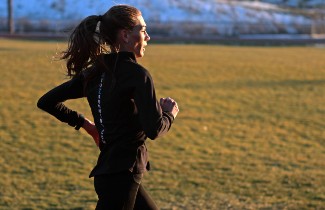

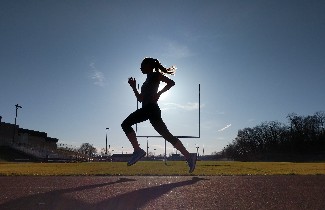
Andi and Zach founded AtoZrunning in 2018 as a means to better help runners thrive. With a combined 45+ years of running as well as coaching middle school, high school, college, and adult runners, Andi and Zach share information and inspiration to support other runners. Whether tuning in to the AtoZrunning Podcast or accessing direct support through training or coaching services, runners around the world leverage AtoZrunning to help achieve goals and enjoy the sport.
Learn more at atozrunning.com
Interested in Coaching or Custom Training Plans?
Visit here for details: atozrunning.com/coaching-services
Or click here to express interest (we'll reach out!): Training Services Interest Form
$400
With decades of running and coaching experience, our coaches (founders of AtoZrunning) support runners of all levels and experiences, whether young or seasoned, both literally and relative to the sport. We provide comprehensive custom training schedules for daily running and strength and mobility an...
VIEW MORE$25
To schedule a running consultation and view available appointments, visit: https://calendly.com/atozrunning/consultation
(Running Consultations are held via Zoom. Video is not required.)
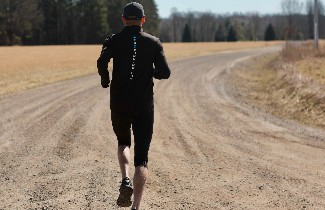
Originally posted on atozrunning.com By Zach Ripley, running coach an...Read More
Originally posted on atozrunning.com
By Zach Ripley, running coach and co-founder of AtoZrunning
Every runner wonders about how to run longer, whether in pursuit of longer races like marathons, ultra marathons, and beyond, or in pursuit of increased training potential. And we all tend to qualify the question. How to run longer without getting injured. How to run longer in the heat. How to run longer in workouts. You get it!
You know from our podcast or other articles that we like to try to simplify these kinds of things, and this question is no exception. But before we share the two word answer to this question, let me briefly share what we’re trying to do here.
This article is merely the first in a series we will be publishing on How to Run. The ultimate goal of the series is to establish how to run better (also the title of the final installment), and to get there, we plan to focus on the most basic aspects: running longer and running faster. More specifically, running longer and running faster effectively.
The two-word answer to how to run longer
Run easier.
As far as we can tell, every authoritative source on running agrees on this point. So it’s a good answer. But it’s also not very well followed.
Have you ever set out for a run to find in the final third or so that you don’t have quite the energy to finish what you started (or perhaps that you do, but you’re wondering if you’re going to pay for it later)?
We all have. Even so, we find ourselves regularly falling into this trap.
Here’s the first problem: we think things to ourselves like “8:30 is my easy pace, and since I do that for my easy 5 mile runs, I should do that for my easy 10 mile runs.” That may not be a conscious thought, but it is a common one. And falls apart under the weight of reality. We don’t run the same pace for a 10k and a half marathon race, so why would we run the same pace for an easy 6 or an easy 13 miles?
We wouldn’t. Not if the intended training stimulus is similar.
How much easier?
How much easier, then, is the first side of this coin, and while a whole lot of smart number crunchers have come up with clever ways of explaining this with heart rate and pace estimators, etc., such metrics are handicaps to the more essential need. We simply need to teach ourselves to run easy enough to finish the effort in the desired state.
If I’m trying to get through an easy run, I need to finish feeling like I’ve got plenty more to give and am not doubled over. If I’m trying to get through a strong effort or a race, I need to be able to run as strong in the last 25% as I could have run in the first 25%.
One simple guiding principle makes all the difference here. When in doubt, ease up. From a purely pragmatic standpoint, almost nothing is lost in training adaptations by going a little bit slower on a run, be it an easy effort or something harder. Conversely, much is lost by overdoing an effort, especially a long effort, especially when done repeatedly over time.
Always remember that progress must be coaxed, courted even, but never coerced.
How much longer?
In order to know how much easier to run, though, we also must know how much longer to run. These two are answered largely at the same time, but there’s at least some sound wisdom we can apply that does not require trial and error.

1

0

0
you must login

Originally published on atozrunning.com By Zach Ripley, running coach...Read More
Originally published on atozrunning.com
By Zach Ripley, running coach and co-founder of AtoZrunning
Every runner needs a good leg strength workout (or two or three). While running is itself providing the vast majority of strengthening a runner might need, most training does not address everything. How is your coordination and stability? When you stand on one leg, do you hold steady or wobble a little? How about when you do a standing lunge? What we find is that a targeted functional movement leg strength workout improves both running mechanics (and therefore economy) and perceived effort.
Answer then, these simple questions: do you want to run better? Do you want to feel better while you run? Then listen up.
The Goal of an Effective Leg Strength Workout
For runners, the ideal leg strength workout fulfills two simple goals:

1

0

0
you must login
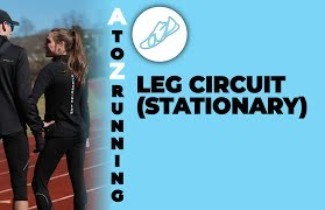

AtoZrunning helps runners thrive by providing information, inspiration...Read More
AtoZrunning helps runners thrive by providing information, inspiration, and community around the sport of running. From coaching services to podcasts and articles, runners can find content created by runners for runners.
In this video, we demonstrate a simple functional movement routine to build leg strength.

0

0

0
you must login

Embracing Pain and Injury I was just as distressed as you are about t...Read More
Embracing Pain and Injury
I was just as distressed as you are about to be when I read the 2010 study from Current Sports Medicine Reports that indicated “40%-50% of runners experience injury yearly.” We already know that pain and injury are common, but numbers like that make it sting.
If we’re counting any small strain or some such as an injury, perhaps it’s not a stretch (the study indicated anything that necessitated any interruption in training). What such news ought to be, though, is a call to action.
If we run, we know these two things with certainty: pain and injury are inevitable, and despite all, the times between make it worthwhile. This examination will simply better equip us to deal with the pain when it strikes in a manner that decreases the disruption to our training.
Understanding Pain
In college, I used to be known for gingerly approaching my coach before practice to announce, “Hey boss, when I do this thing and move in this very particular way, this other thing hurts in this very precise spot.” Any guesses how said coach most often responded?
Don’t do that thing.
He was on point for calling out my absurdity. Unfortunately, this also seems to be the most common reaction from general doctors when approached by a runner with a running pain. Stop running for a bit, and it will stop hurting. Right?
Pain is more complex than that, though, and warrants some amount of reflection. We will present in this guide our basic approach to responding to pain, and in order to do that, we need to clarify what we mean by pain.
We are all familiar with such terms as soreness, tightness, aching, burning, stinging, and the like. Let’s apply a simple caveat here: pain is the body’s signal that something is amiss. That signal always means something. That doesn’t always mean it is an especially notable or significant something, but as runners, our first priority in dealing with pain is understanding to what degree notable intervention is needed.
When considering whether a pain is notable and worthy of significant intervention, apply these parameters:

1

0

0
you must login
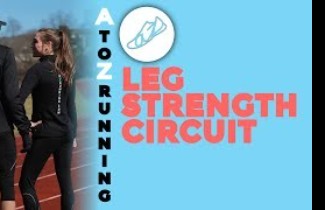

Leg strength being one of the baseline essential factors for healthy r...Read More
Leg strength being one of the baseline essential factors for healthy running, this circuit helps runners develop strength in functional movement as well as movement precision and coordination. By focusing on single leg motion, runners can expect to develop stability and balance as well.
We recommend these types of circuits be implemented after initial foundations have already been established. For a more initial routine, see the stationary leg strength routine.


2


0


0
you must login
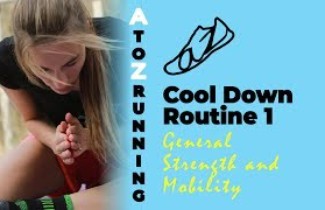

Post-run routines can help with neuromuscular wiring and general stren...Read More
Post-run routines can help with neuromuscular wiring and general strength and mobility. This routine is intended to support both. To accomplish this goal, always seek to perform each movement deliberately and slowly. Control is key.
For more, visit atozrunning.com

0

0

0
you must login

The next best thing since sliced bread was toasting those carbohydrate...Read More
The next best thing since sliced bread was toasting those carbohydrate-rich slabs of goodness.
This slab of goodness has rescued my morning re-fuel a time or two. If you’re like me, you’re tired because life is busy and you need to get breakfast in your belly ASAP. Make the most of the slice of toast and get some good nutrition to help build towards recovery.
If that wasn’t awesome enough, fixing them with a variety of delectable toppings. Toast can be the backbone to build solid morning nutrition. With little effort, your toast can become a rather fancy morning meal.
The Classic Toast
I get it. Sometimes all you want is the basic toast with butter. What can you use instead of butter? Let’s say you are out and dry toast is just sad.
Substitutions for butter:

0

0

0
you must login
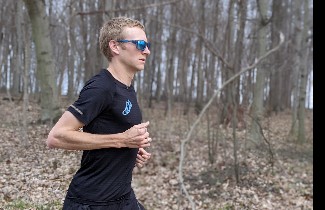
One of the most common questions we get from runners is how to run a f...Read More
One of the most common questions we get from runners is how to run a fartlek workout. This is not surprising given that ambiguity and uncertainty have surrounded fartleks since their birth in Sweden in the 1930s.
Our endeavor here will be to make abundantly clear how to run a fartlek workout successfully. To accomplish this, we will need to separate fartleks from other workout types as well as define clearly the purpose and spirit of the workout.
Delineating Common Workout Types
It might be said that there are really only two types of workouts at a fundamental level. Nuances aside, there are workouts that involve sustained running at a given pace, and there are workouts that involve some kind of change of pace or intervals of varying efforts. This being true, fartleks fall under the category of interval types of workouts.
More accurately, though, fartlek and interval are somewhat interchangeable terms. A fartlek workout is really just any combination of faster and slower running over a given duration. What makes it different from other interval workouts has more to do with purpose than form.
Hearkening back to its origin, a fartlek is a playtime run (recall the translation of the word fartlek: “speed play”). To apply that properly, a runner must then use a fartlek workout differently than other intervals. Primarily, a runner must seek to engage a spectrum of efforts within a single workout along with easy running rest periods.
Additionally, at its core, a fartlek ought to differ from other workouts by being more precisely attuned to each athlete, and not merely to each athlete but even more to each athlete in each instance. One might therefore note that the fartlek workout is the runner’s tool to getting exactly what is needed in the moment of needing it.
Achieving the Spirit of the Fartlek Workout
Understanding that fartleks are both highly variable and differentiated, the aforementioned ambiguity and uncertainty makes perfect sense. Or maybe makes no sense at all.
This is also why when seeking to run a fartlek, the question “But what exactly should I do?” is actually not very easy to answer. It’s also simply bad practice to try to answer it. (Which is why, for those of you whom we have coached, we are unapologetic in providing an unsatisfactory answer! But fear not and read on…)
First, the answer has to begin with the purpose and spirit of how to run a fartlek workout. The format in general terms is playing with speed across various efforts and paces, so the central purpose, therefore, is neuromuscular. Additionally, the goal of the workout is to provide the stimulation needed at that moment for that runner. Therefore, the spirit of the workout is to respond to the body’s needs both in terms of needs identified in recent training and needs manifesting as the workout unfolds.
This is incredibly challenging!
We are suggesting that in order to achieve the purpose and spirit of the workout, we need to be able to make in-workout decisions and adjustments without the input from a coach. The best coaching during a fartlek looks like this: “How are you feeling? Does it feel better to go faster or slow it down a little? Do you need to jog longer between pace changes? Do you want to try throwing in something different?”
Coaching someone through a fartlek requires knowing realtime reactions to questions like these. That’s not especially practical, though.
With this in mind, we really need an aid to achieving the intuitive goal without so much thinking.
A Framework for Executing an Effective Fartlek Workout
Let’s build a simple yet highly effective framework. With this in mind, we should be able to successfully achieve the goal very nearly every time we run a fartlek. The framework involves making 3 decisions on repeat in response to two simple physiological cues.
Decision 1: Should I pick it up now?
CUE: Am I feeling fresh enough to go fast?
As you are jogging (be it the warmup before the workout begins or a rest jog between faster sections), once you begin to feel fully recovered and comfortable, your body should be ready for another pace change. All you need to determine here is whether it’s time to get up and go.
Decision 2: How fast should I go?
Once you start accelerating (or perhaps just before), determine how fast you want to go. This is not complicated because the intent is variety. Whatever you did most recently, do something a little different. This can range from strong steady effort running up to and including short wind sprints (we call them leg speed or running form strides).
Decision 3: Should I slow down now?
CUE: Are my legs starting to fatigue at this current effort?
As you push at the increased effort, monitor how you are feeling. Naturally, if you decided in #2 to go substantially faster, you are going to fatigue sooner. The key is slowing down before you cannot handle the pace any more.
Then repeat!
A fartlek can occupy a total duration of a wide spectrum, depending on the nature of the need (though we do not recommend doing fartleks for longer than 60 minutes total, including the jogging rest between). As you execute the workout, simply focus on how you are feeling, interspersing lots of variety along with plenty of easy jogging between faster efforts.
Why This is Helpful
Knowing now how to effectively implement fartleks, we ought to reflect a moment on why this type of workout offers value to our training. In a word, variety.
Fartleks are the Swiss Army Knife workout (yes, yes - I know it’s Swedish). They provide the opportunity to fill gaps in many ways because by their very nature, they can be whatever we want or need them to be in a given moment. For example, during such periods as general base training or conditioning work, fartleks provide a chance for some light and quick sessions without excessively taxing the energy system like hard interval workouts are prone to do. Additionally, during a more intense race-specific coordination period, fartleks are a great chance to keep in touch with training elements that might not be as present.
This is why fartleks are neuromuscular in nature and also why variety as well as substantial jogging periods are essential.
Now, don’t just take our word for it. Give that framework a try on your next fartlek session, then let us know how it went!
By Zach Ripley, running coach and co-founder of AtoZrunning
Originally published on AtoZrunning.com

0

0

0
you must login


Active Isolated Flexibility (AIF) was originally popularized by Jim an...Read More
Active Isolated Flexibility (AIF) was originally popularized by Jim and Phil Wharton as a method for effectively and intuitively increasing mobility. As an approach, AIF leverages the agonist/antagonist pairing of muscle groups to functionally contract and elongate muscle tissues. Watch this video for a complete guided routine of AIF especially attuned to runners.
For more, visit atozrunning.com

0

0

0
you must login
Andi and Zach founded AtoZrunning in 2018 as a means to better help runners thrive. With a combined 45+ years of running as well as coaching middle school, high school, college, and adult runners, Andi and Zach share information and inspiration to support other runners. Whether tuning in to the AtoZrunning Podcast or accessing direct support through training or coaching services, runners around the world leverage AtoZrunning to help achieve goals and enjoy the sport.
Learn more at atozrunning.com
Interested in Coaching or Custom Training Plans?
Visit here for details: atozrunning.com/coaching-services
Or click here to express interest (we'll reach out!): Training Services Interest Form
Training Block was created with a mission to support and empower runners, in order to elevate our sport. We do so by giving runners access to a network of local sport performance providers, who provide runners with the care they need from coaching, physical therapy, massage, strength training, and more. We also give providers an easy way to connect with each other and share articles, videos, and other resources that benefit runners and providers alike. For every service booked through Training Block, we donate 10% of our revenues to Training Block’s Elite Athlete Fund, which sponsors elite runners who do not have professional contracts and need financial support for racing at their highest level.
Copyright © 2024 Training Block. All rights reserved.
Refer a friend and get $5 discount on order!